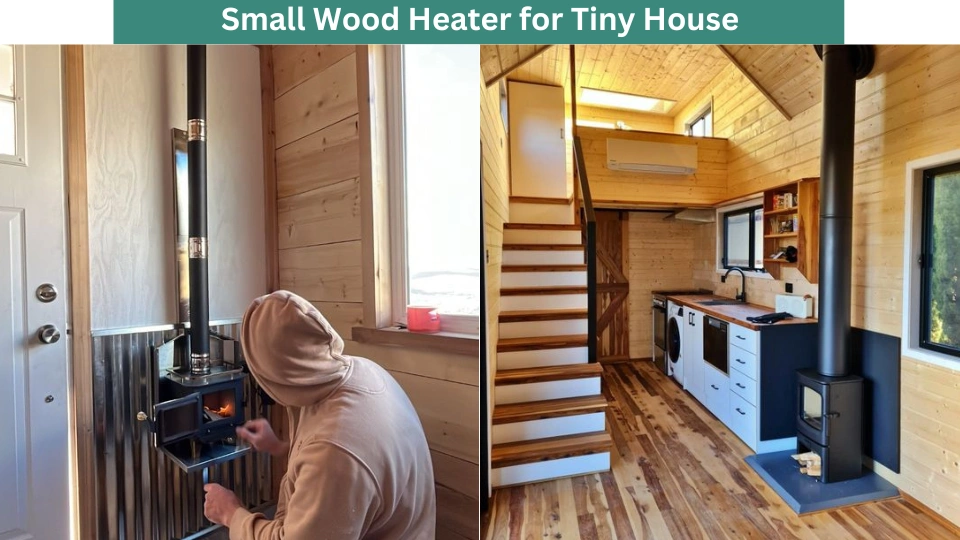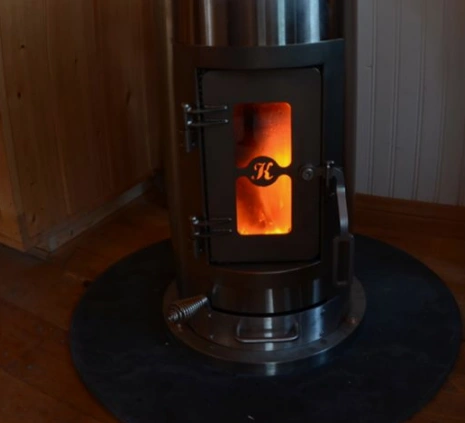
Table of Contents
ToggleTop 5 Best Small Wood Heater for Tiny House
Discover the best small wood heater for tiny house living, perfect for cozy warmth in compact spaces. Here are the 5 best small wood heater for tiny house option:
1: Electric Heater
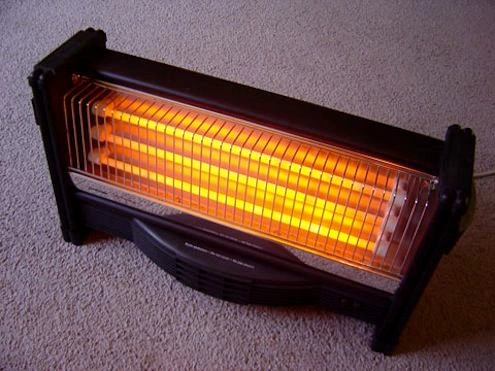
Considering electric heating as an option alongside your Small wood heater for tiny house can be a smart move, offering affordability, simplicity, and efficiency based on your needs.
Here are some reasons why electric heaters could be the right choice:
- Electric heaters are easy to find and buy.
- They’re budget-friendly.
- Installation is simple; just plug them in.
- You have the freedom to pick the perfect BTU size for your space.
On the downside, there are several drawbacks:
- They lack aesthetic appeal.
- Electric heaters can occupy floor space.
- They tend to consume a significant amount of power, leading to high operating costs.
- They are not practical for off-grid living.
- This option primarily suits on-grid situations. Electric heaters impose substantial electrical demands, making them impractical for off-grid use, especially during winter when solar arrays would need to be excessively costly to support them.
There are two types of electric heat: forced-air and radiant heat.
Forced air is preferable if you need rapid heating. Although they often come with noisy fans, they’re suitable for occasional use when you want the house to warm up quickly after being vacant.
Radiant heat is better suited for gradually warming a space. It gently warms the surrounding air by emitting heat into the material of the home.
For instance, radiant floor heating warms the floor, which then disperses heat consistently throughout the house. You spend a lot of time indoors and have access to grid power, a radiant heater might be a favorable option. Click here to buy.
2: Kerosene Heater
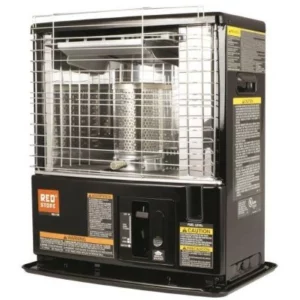
Considering kerosene as an option for heating small houses is worth mentioning. It’s interesting to know that kerosene heaters are widely used as the main source of heat in many Japanese homes.
Here are some good things about using kerosene heat:
- They come with thermostat controls for easy adjustment.
- Kerosene burns cleanly, leaving minimal mess.
- You have the choice between vented and unvented options.
However, there are some downsides to keep in mind:
- It can be a bit pricey to get started.
- Sometimes finding fuel can be a hassle.
- Kerosene heat relies on fossil fuels, which isn’t great for the environment.
Many people believe that investing in kerosene for a Small wood heater for tiny house is worthwhile. It produces intense heat and offers a higher BTU output compared to propane. However, it’s not as environmentally friendly due to its less clean combustion.
While kerosene is cheaper than propane, its availability may vary depending on your location. In smaller spaces like a tiny house, it’s crucial to use a vented heater to minimize the risk of carbon monoxide exposure. Click here to buy.
3: Wood or Pellet Stove
Some people enjoy using wood heat, while others don’t. Let’s discuss the pros and cons of having a wood or pellet stove.
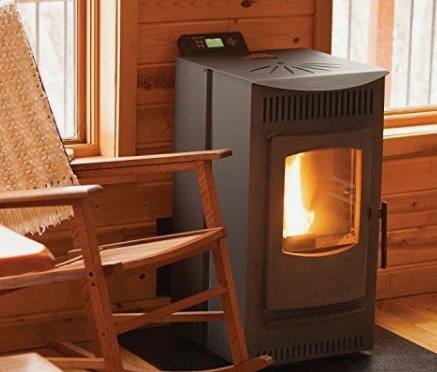
Here are the benefits:
- Wood fuel is usually cheap.
- It creates a cozy atmosphere with a fire.
- It’s better for the environment.
- You can use it for cooking too.
However, there are downsides:
- Initial costs can be medium to high.
- It might be hard to find a small stove.
- You need a lot of space around it.
- It takes effort to maintain and can get messy.
There’s something special about having a Small wood heater for tiny house. It brings a cozy vibe and a lovely scent that’s hard to find with other heaters.
But it’s important to choose the right size. It’s too big, it can hog space and make the house too warm.
Small wood heaters for tiny houses need space around them to be safe and they need attention. Besides chopping and stacking wood, you’ve got to keep an eye on the fire to keep it going smoothly. Click here to buy.
4: Mini-Split Heat Pumps
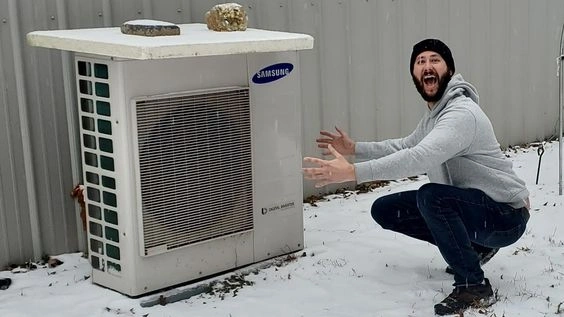
You’re living on the grid, you might find a mini-split heat pump to be a good option for heating your tiny house. Here’s why:
- They come with thermostat controls, making it easy to adjust the temperature.
- Mini-split heat pumps can efficiently heat and cool small spaces.
- They’re highly efficient.
- Since they’re mounted on walls, they don’t take up any floor space.
- Many models also offer air conditioning capabilities.
- They help maintain proper humidity levels indoors.
However, there are some things to consider:
- They can be expensive upfront.
- They might not work as well in extremely cold climates.
- Installation might require professional help, depending on your DIY skills.
It’s generally better to avoid using them in very cold climates because they rely on electric heating coils once temperatures drop to around 30°F, which can lead to higher electricity usage.
One great aspect of heat pumps is their ability to provide both heating and cooling for tiny houses. Click here to buy.
5: Propane Heater
Another option that’s popular for heating a Small wood heater for tiny house is propane.
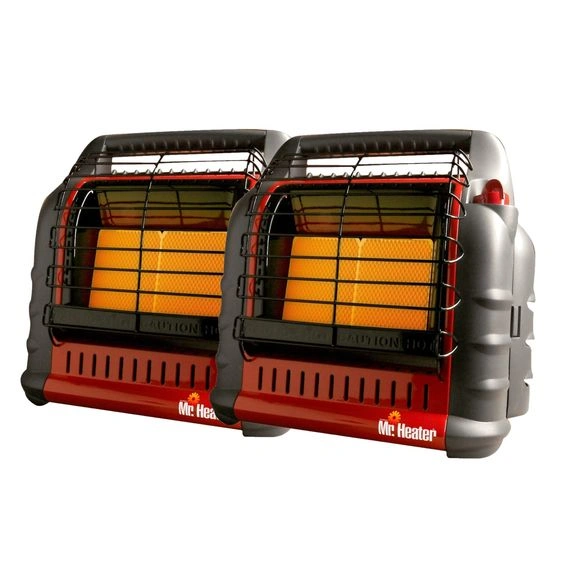
Here are some of the pros of propane:
- It’s thermostat controlled, so you can easily adjust the temperature.
- You can choose between vented or unvented systems.
- Propane burns very clean.
However, it’s important to also consider some cons:
- It requires fossil fuels to operate.
- Depending on your location, it may be challenging to find.
- The initial cost is medium to high.
Propane is efficient, burns cleanly, and is relatively inexpensive. In many locations, it is also easy to find. Click here to buy.
Tiny House Heating: How to Decide?
When you’re choosing a heater for your Small wood heater for tiny house, there are a few important things to keep in mind.
Firstly, think about whether you’re connected to the grid or living off-grid. If you live off-grid, you might have fewer choices, but there are still plenty of accessible options available. Next, consider your lifestyle and what your daily routine looks like.
While a wood stove might seem like a cozy option, it’s essential to think about the practicalities. For example, restarting the fire every morning can be a bit of a hassle. While wood stoves can be great for heating a tiny house, they do require more maintenance compared to modern methods.
Another thing to think about is the size of your heating system. You want to make sure it’s just right to keep your tiny house cozy without making it too hot.
And don’t forget about the price. Some systems might cost more at the beginning but save you money in the long run, while others are cheaper upfront but end up costing more over time.
Overall, we really like the idea of using a mini-split heat and A/C system with backup electric in-wall or radiant floor heating.
Few More Considerations
When planning your tiny house design and selecting a heating system, there are a few more things to consider. These include indoor air quality, safety, and insulation.
Safety is crucial, especially with flame-based heaters, to prevent any fire hazards, particularly if you have young children.
Indoor air quality is essential in small spaces, as gases like carbon monoxide can build up. Proper ventilation is necessary to reduce these risks when choosing a heating system.
Lastly, ensure your home is well-insulated and sealed. Though it may require a higher upfront investment, good insulation can lead to significant long-term savings on heating costs.
Are You Ready to Go Tiny?
Many aspects of the tiny house lifestyle attract modern Americans. Returning to simplicity, cutting costs, and embracing minimalism are key draws.
Discover the perfect small wood heater for tiny houses, now available for sale, providing efficient heating solutions for compact living spaces.
Frequently Asked Questions
How to Build a Small Wood Heater?
To build a small wood heater:
- Plan the design.
- Gather materials: bricks, metal sheets, stovepipe, chimney, mortar.
- Construct the base and walls.
- Install stovepipe and chimney.
- Add heat shields for safety.
- Test for efficiency and safety.
How to Make a Small Wood Heater?
How to Heat a Tiny House?
Radiant floor heating is a convenient way to warm small homes. It works by placing heating elements beneath the floor, powered by electricity or hydronic systems. As these elements generate heat, it rises upward, effectively heating the living space above.
What Features Make the Best Small Wood Stove for Tiny Houses?
The best small wood stove for tiny houses typically has features such as compact size, high efficiency, adjustable heat output, durable construction, and safety features like heat shields and airwash systems.
How Much Does a Small Cast Iron Stove Weigh?
A good stove is made of heavy cast iron, which is quite weighty. A small ‘Franklin’ style weighs around 250 to 300 lbs.
What are the Top Small Wood Stoves for Cabins?
Some top small wood stoves for cabins include the Cubic Mini Wood Stove, the Dickinson Marine Newport Solid Fuel Heater, and the Vogelzang Defender Wood Stove.
What to Consider When Choosing a Mini Wood Stove for a Van?
When choosing a mini wood stove for a van, consider factors such as size, weight, fuel type, installation requirements, safety features, and compatibility with your van’s layout and ventilation system.
What Factors Matter for Choosing a Small Wood Stove Indoors?
When choosing a small wood stove for indoor use, factors such as size, safety features, ventilation requirements, efficiency, and compatibility with your space are important considerations.

